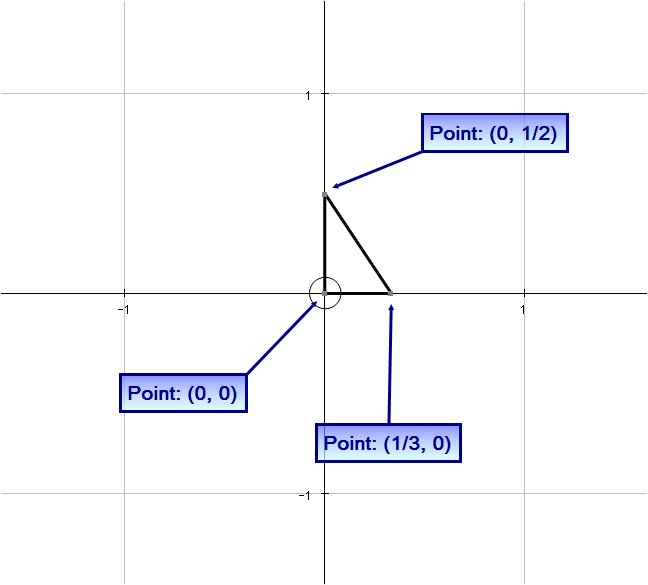How do you find the volume of the solid bounded by the coordinate planes and the plane #3x+2y+z=1#?
1 Answer
Volume = 1/36 (
Explanation:
The coordinate planes are given by
The given tetrahedron is a solid that lies above the triangle

The line joining
# y-0 = ((1/2)/(-1/3))(x-1/3) #
# :. y = -3/2x+1/2 #
And so the region
# R = {(x, y) | 0 le x le 1/3, 0 le y le −3/2x +1/2 } #
And the volume,
integral of the function
# :. V = int int_R (1 − 3x − 2y) \ dA#
# " "= int_0^(1/3) int_(0)^(-3/2x+1/2) (1 − 3x − 2y) \ dy \ dx#
# " "= int_0^(1/3) [(1-3x)y-y^2]_(y=0)^(y=-3/2x+1/2) \ dx #
# " "= int_0^(1/3) {(1-3x)((-3x)/2+1/2)-((-3x)/2+1/2)^2} - {0} \ dx #
# " "= int_0^(1/3) (-3/2x+1/2+9/2x^2-3/2x)-(9/4x^2-3/2x+1/4) \ dx #
# " "= int_0^(1/3) (1/4-3/2x+9/4x^2) \ dx #
# " "= [1/4x-3/4x^2+9/12x^3]_0^(1/3) #
# " "= {1/12-1/12+1/36} - {0} #
# " "= 1/36 #

